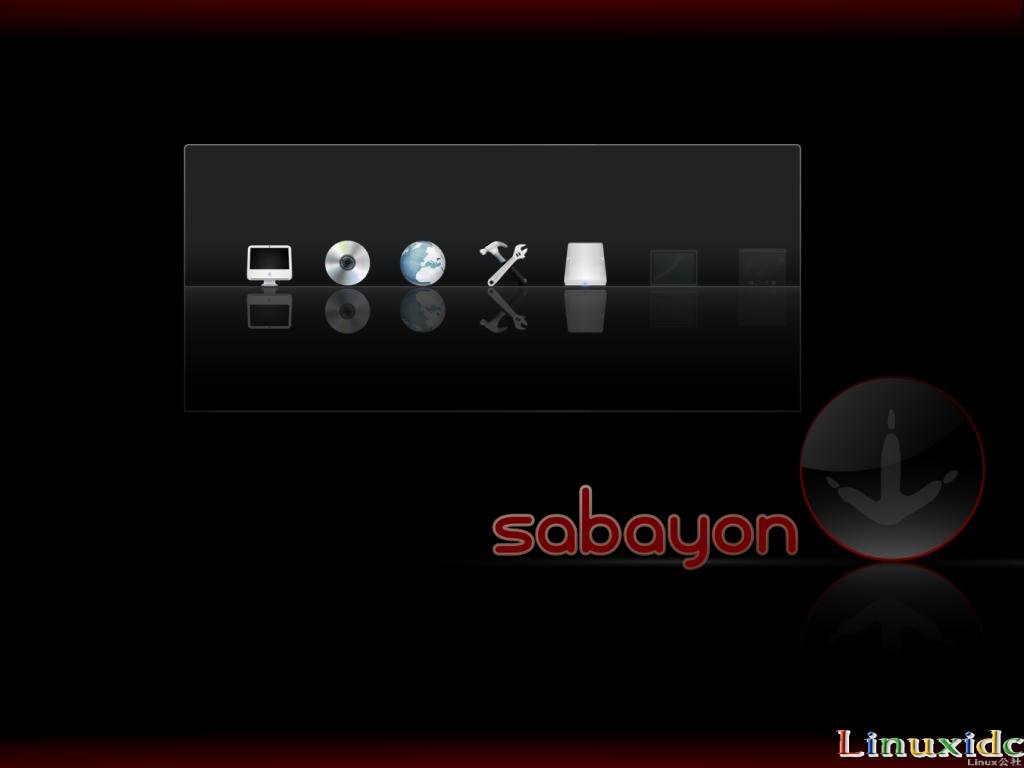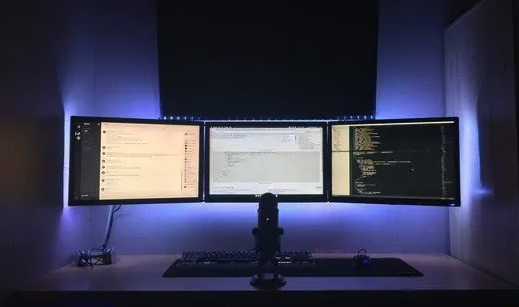[root@Centos72 libvirt]#qemu-kvm -h
QEMU emulator version 1.5.3 (qemu-kvm-1.5.3-156.el7_5.3), Copyright (c) 2003-2008 Fabrice BellardWARNING: Direct use of qemu-kvm from the command line is not supported by Red Hat.
WARNING: Use libvirt as the stable management interface.
WARNING: Some command line options listed here may not be available in future releases.usage: qemu-kvm [options] [disk_image]'disk_image' is a raw hard disk image for IDE hard disk 0Standard options: #标准选项
-h or -help display this help and exit
-version display version information and exit
-machine [type=]name[,prop[=value][,...]]selects emulated machine ('-machine help' for list)property accel=accel1[:accel2[:...]] selects acceleratorsupported accelerators are kvm, xen, tcg (default: tcg)kernel_irqchip=on|off controls accelerated irqchip supportkvm_shadow_mem=size of KVM shadow MMUdump-guest-core=on|off include guest memory in a core dump (default=on)mem-merge=on|off controls memory merge support (default: on)
-cpu cpu select CPU ('-cpu help' for list)
-smp n[,maxcpus=cpus][,cores=cores][,threads=threads][,sockets=sockets]set the number of CPUs to 'n' [default=1]maxcpus= maximum number of total cpus, includingoffline CPUs for hotplug, etccores= number of CPU cores on one socketthreads= number of threads on one CPU coresockets= number of discrete sockets in the system
-numa node[,mem=size][,cpus=cpu[-cpu]][,nodeid=node]
-add-fd fd=fd,set=set[,opaque=opaque]Add 'fd' to fd 'set'
-set group.id.arg=valueset
-global driver.prop=valueset a global default for a driver property
-boot [order=drives][,once=drives][,menu=on|off][,splash=sp_name][,splash-time=sp_time][,reboot-timeout=rb_time][,strict=on|off]'drives': floppy (a), hard disk (c), CD-ROM (d), network (n)'sp_name': the file's name that would be passed to bios as logo picture, if menu=on'sp_time': the period that splash picture last if menu=on, unit is ms'rb_timeout': the timeout before guest reboot when boot failed, unit is ms
-m megs set virtual RAM size to megs MB [default=128]
-mem-path FILE provide backing storage for guest RAM
-mem-prealloc preallocate guest memory (use with -mem-path)
-k language use keyboard layout (for example 'fr' for French)
-audio-help print list of audio drivers and their options
-soundhw c1,... enable audio supportand only specified sound cards (comma separated list)use '-soundhw help' to get the list of supported cardsuse '-soundhw all' to enable all of them
-balloon none disable balloon device
-balloon virtio[,addr=str]enable virtio balloon device (default)
-device driver[,prop[=value][,...]]add device (based on driver)prop=value,... sets driver propertiesuse '-device help' to print all possible driversuse '-device driver,help' to print all possible properties
-name string1[,process=string2]set the name of the gueststring1 sets the window title and string2 the process name (on Linux)
-uuid %08x-%04x-%04x-%04x-%012xspecify machine UUIDBlock device options: #块设备选项
-fda/-fdb file use 'file' as floppy disk 0/1 image
-hda/-hdb file use 'file' as IDE hard disk 0/1 image
-hdc/-hdd file use 'file' as IDE hard disk 2/3 image
-cdrom file use 'file' as IDE cdrom image (cdrom is ide1 master)
-drive [file=file][,if=type][,bus=n][,unit=m][,media=d][,index=i][,cyls=c,heads=h,secs=s[,trans=t]][,snapshot=on|off][,cache=writethrough|writeback|none|directsync|unsafe][,format=f][,serial=s][,addr=A][,id=name][,aio=threads|native][,readonly=on|off][,copy-on-read=on|off][[,bps=b]|[[,bps_rd=r][,bps_wr=w]]][[,iops=i]|[[,iops_rd=r][,iops_wr=w]]use 'file' as a drive image
-mtdblock file use 'file' as on-board Flash memory image
-sd file use 'file' as SecureDigital card image
-pflash file use 'file' as a parallel flash image
-snapshot write to temporary files instead of disk image files
-hdachs c,h,s[,t]force hard disk 0 physical geometry and the optional BIOStranslation (t=none or lba) (usually QEMU can guess them)
-fsdev fsdriver,id=id[,path=path,][security_model={mapped-xattr|mapped-file|passthrough|none}][,writeout=immediate][,readonly][,socket=socket|sock_fd=sock_fd]
-virtfs local,path=path,mount_tag=tag,security_model=[mapped-xattr|mapped-file|passthrough|none][,writeout=immediate][,readonly][,socket=socket|sock_fd=sock_fd]
-virtfs_synth Create synthetic file system imageUSB options: # usb选项
-usb enable the USB driver (will be the default soon)
-usbdevice name add the host or guest USB device 'name'Display options:
-display sdl[,frame=on|off][,alt_grab=on|off][,ctrl_grab=on|off][,window_close=on|off]|curses|none|vnc=
-nographic disable graphical output and redirect serial I/Os to console
-curses use a curses/ncurses interface instead of SDL
-no-frame open SDL window without a frame and window decorations
-alt-grab use Ctrl-Alt-Shift to grab mouse (instead of Ctrl-Alt)
-ctrl-grab use Right-Ctrl to grab mouse (instead of Ctrl-Alt)
-no-quit disable SDL window close capability
-sdl enable SDL
-spice [port=port][,tls-port=secured-port][,x509-dir=][,tls-channel=[main|display|cursor|inputs|record|playback]][,plaintext-channel=[main|display|cursor|inputs|record|playback]][,sasl][,password=
-portrait rotate graphical output 90 deg left (only PXA LCD)
-rotate
-vga [std|cirrus|vmware|qxl|xenfb|none]select video card type
-full-screen start in full screen
-vnc display start a VNC server on displayi386 target only:
-win2k-hack use it when installing Windows 2000 to avoid a disk full bug
-no-fd-bootchk disable boot signature checking for floppy disks
-no-acpi disable ACPI
-no-hpet disable HPET
-acpitable [sig=str][,rev=n][,oem_id=str][,oem_table_id=str][,oem_rev=n][,asl_compiler_id=str][,asl_compiler_rev=n][,{data|file}=file1[:file2]...]ACPI table description
-smbios file=binaryload SMBIOS entry from binary file
-smbios type=0[,vendor=str][,version=str][,date=str][,release=%d.%d]specify SMBIOS type 0 fields
-smbios type=1[,manufacturer=str][,product=str][,version=str][,serial=str][,uuid=uuid][,sku=str][,family=str]specify SMBIOS type 1 fieldsNetwork options: # 网络选项
-net nic[,vlan=n][,macaddr=mac][,model=type][,name=str][,addr=str][,vectors=v]create a new Network Interface Card and connect it to VLAN 'n'
-net user[,vlan=n][,name=str][,net=addr[/mask]][,host=addr][,restrict=on|off][,hostname=host][,dhcpstart=addr][,dns=addr][,dnssearch=domain][,tftp=dir][,bootfile=f][,hostfwd=rule][,guestfwd=rule][,smb=dir[,smbserver=addr]]connect the user mode network stack to VLAN 'n', configure itsDHCP server and enabled optional services
-net tap[,vlan=n][,name=str][,fd=h][,fds=x:y:...:z][,ifname=name][,script=file][,downscript=dfile][,helper=helper][,sndbuf=nbytes][,vnet_hdr=on|off][,vhost=on|off][,vhostfd=h][,vhostfds=x:y:...:z][,vhostforce=on|off][,queues=n]connect the host TAP network interface to VLAN 'n'use network scripts 'file' (default=/etc/qemu-ifup)to configure it and 'dfile' (default=/etc/qemu-ifdown)to deconfigure ituse '[down]script=no' to disable script executionuse network helper 'helper' (default=/usr/libexec/qemu-bridge-helper) toconfigure ituse 'fd=h' to connect to an already opened TAP interfaceuse 'fds=x:y:...:z' to connect to already opened multiqueue capable TAP interfacesuse 'sndbuf=nbytes' to limit the size of the send buffer (thedefault is disabled 'sndbuf=0' to enable flow control set 'sndbuf=1048576')use vnet_hdr=off to avoid enabling the IFF_VNET_HDR tap flaguse vnet_hdr=on to make the lack of IFF_VNET_HDR support an error conditionuse vhost=on to enable experimental in kernel accelerator(only has effect for virtio guests which use MSIX)use vhostforce=on to force vhost on for non-MSIX virtio guestsuse 'vhostfd=h' to connect to an already opened vhost net deviceuse 'vhostfds=x:y:...:z to connect to multiple already opened vhost net devicesuse 'queues=n' to specify the number of queues to be created for multiqueue TAP
-net bridge[,vlan=n][,name=str][,br=bridge][,helper=helper]connects a host TAP network interface to a host bridge device 'br'(default=br0) using the program 'helper'(default=/usr/libexec/qemu-bridge-helper)
-net socket[,vlan=n][,name=str][,fd=h][,listen=[host]:port][,connect=host:port]connect the vlan 'n' to another VLAN using a socket connection
-net socket[,vlan=n][,name=str][,fd=h][,mcast=maddr:port[,localaddr=addr]]connect the vlan 'n' to multicast maddr and portuse 'localaddr=addr' to specify the host address to send packets from
-net socket[,vlan=n][,name=str][,fd=h][,udp=host:port][,localaddr=host:port]connect the vlan 'n' to another VLAN using an UDP tunnel
-net dump[,vlan=n][,file=f][,len=n]dump traffic on vlan 'n' to file 'f' (max n bytes per packet)
-net none use it alone to have zero network devices. If no -net optionis provided, the default is '-net nic -net user'
-netdev [user|tap|bridge|socket|hubport],id=str[,option][,option][,...]Character device options:
-chardev null,id=id[,mux=on|off]
-chardev socket,id=id[,host=host],port=host[,to=to][,ipv4][,ipv6][,nodelay][,server][,nowait][,telnet][,mux=on|off] (tcp)
-chardev socket,id=id,path=path[,server][,nowait][,telnet],[mux=on|off] (unix)
-chardev udp,id=id[,host=host],port=port[,localaddr=localaddr][,localport=localport][,ipv4][,ipv6][,mux=on|off]
-chardev msmouse,id=id[,mux=on|off]
-chardev vc,id=id[[,width=width][,height=height]][[,cols=cols][,rows=rows]][,mux=on|off]
-chardev ringbuf,id=id[,size=size]
-chardev file,id=id,path=path[,mux=on|off]
-chardev pipe,id=id,path=path[,mux=on|off]
-chardev pty,id=id[,mux=on|off]
-chardev stdio,id=id[,mux=on|off][,signal=on|off]
-chardev serial,id=id,path=path[,mux=on|off]
-chardev tty,id=id,path=path[,mux=on|off]
-chardev parallel,id=id,path=path[,mux=on|off]
-chardev parport,id=id,path=path[,mux=on|off]
-chardev spicevmc,id=id,name=name[,debug=debug]
-chardev spiceport,id=id,name=name[,debug=debug]Device URL Syntax:
-iscsi [user=user][,password=password][,header-digest=CRC32C|CR32C-NONE|NONE-CRC32C|NONE[,initiator-name=initiator-iqn][,id=target-iqn]iSCSI session parameters
Bluetooth(R) options:
-bt hci,null dumb bluetooth HCI - doesn't respond to commands
-bt hci,host[:id]use host's HCI with the given name
-bt hci[,vlan=n]emulate a standard HCI in virtual scatternet 'n'
-bt vhci[,vlan=n]add host computer to virtual scatternet 'n' using VHCI
-bt device:dev[,vlan=n]emulate a bluetooth device 'dev' in scatternet 'n'Linux/Multiboot boot specific:
-kernel bzImage use 'bzImage' as kernel image
-append cmdline use 'cmdline' as kernel command line
-initrd file use 'file' as initial ram disk
-dtb file use 'file' as device tree imageDebug/Expert options:
-serial dev redirect the serial port to char device 'dev'
-parallel dev redirect the parallel port to char device 'dev'
-monitor dev redirect the monitor to char device 'dev'
-qmp dev like -monitor but opens in 'control' mode
-mon chardev=[name][,mode=readline|control][,default]
-debugcon dev redirect the debug console to char device 'dev'
-pidfile file write PID to 'file'
-singlestep always run in singlestep mode
-S freeze CPU at startup (use 'c' to start execution)
-realtime [mlock=on|off]run qemu-kvm with realtime featuresmlock=on|off controls mlock support (default: on)
-gdb dev wait for gdb connection on 'dev'
-s shorthand for -gdb tcp::1234
-d item1,... enable logging of specified items (use '-d help' for a list of log items)
-D logfile output log to logfile (default stderr)
-L path set the directory for the BIOS, VGA BIOS and keymaps
-bios file set the filename for the BIOS
-enable-kvm enable KVM full virtualization support
-xen-domid id specify xen guest domain id
-xen-create create domain using xen hypercalls, bypassing xendwarning: should not be used when xend is in use
-xen-attach attach to existing xen domainxend will use this when starting QEMU
-no-reboot exit instead of rebooting
-no-shutdown stop before shutdown
-loadvm [tag|id]start right away with a saved state (loadvm in monitor)
-daemonize daemonize QEMU after initializing
-option-rom rom load a file, rom, into the option ROM space
-clock force the use of the given methods for timer alarm.To see what timers are available use '-clock help'
-rtc [base=utc|localtime|date][,clock=host|rt|vm][,driftfix=none|slew]set the RTC base and clock, enable drift fix for clock ticks (x86 only)
-icount [N|auto]enable virtual instruction counter with 2^N clock ticks perinstruction
-watchdog i6300esb|ib700enable virtual hardware watchdog [default=none]
-watchdog-action reset|shutdown|poweroff|pause|debug|noneaction when watchdog fires [default=reset]
-echr chr set terminal escape character instead of ctrl-a
-virtioconsole cset virtio console
-show-cursor show cursor
-tb-size n set TB size
-incoming p prepare for incoming migration, listen on port p
-nodefaults don't create default devices
-chroot dir chroot to dir just before starting the VM
-runas user change to user id user just before starting the VM
-sandbox
-readconfig
-writeconfig
-nodefconfigdo not load default config files at startup
-no-user-configdo not load user-provided config files at startup
-trace [events=
-enable-fips enable FIPS 140-2 compliance
-object TYPENAME[,PROP1=VALUE1,...]create an new object of type TYPENAME setting propertiesin the order they are specified. Note that the 'id'property must be set. These objects are placed in the'/objects' path.
-msg timestamp[=on|off]change the format of messageson|off controls leading timestamps (default:on)
-dump-vmstate
During emulation, the following keys are useful:
ctrl-alt-f toggle full screen
ctrl-alt-n switch to virtual console 'n'
ctrl-alt toggle mouse and keyboard grabWhen using -nographic, press 'ctrl-a h' to get some help.WARNING: Direct use of qemu-kvm from the command line is not supported by Red Hat.
WARNING: Use libvirt as the stable management interface.
WARNING: Some command line options listed here may not be available in future releases.









![[大整数乘法] java代码实现](https://img1.php1.cn/3cd4a/24c6f/9f3/0133bb25da242824.jpeg)



 京公网安备 11010802041100号
京公网安备 11010802041100号